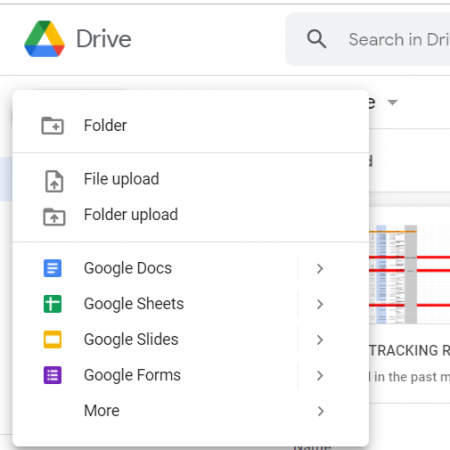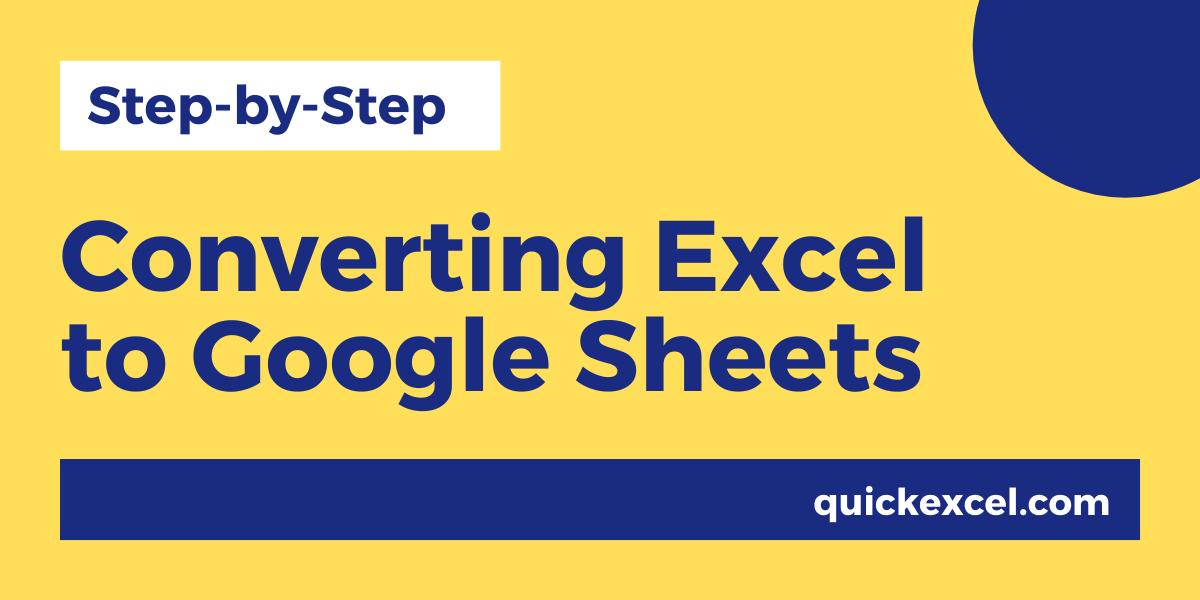5 Easy Ways to Convert Excel to Google Sheets

If you work with spreadsheets, chances are you've encountered situations where you needed to convert an Excel file to Google Sheets. Whether it's for better collaboration, cloud-based access, or compatibility reasons, moving your data from Microsoft Excel to Google Sheets can streamline your productivity. Here are five straightforward methods to achieve this:
1. Direct Upload to Google Drive


The simplest way to convert Excel files to Google Sheets is by directly uploading them to Google Drive. Here’s how you can do it:
- Open Google Drive in your web browser.
- Click on the New button in the left panel, then select File upload.
- Navigate to your Excel file and select it. This action will automatically start the upload.
- Once uploaded, locate the file in your Drive. Right-click on it and select Open with, then choose Google Sheets.
Your Excel file will be converted into a Google Sheets document.
Notes:

🗂️ Note: If your Excel file contains macros or certain advanced Excel features, they might not transfer over to Google Sheets as they are unsupported.
2. Importing in Google Sheets


Google Sheets offers an import option within the platform:
- Open Google Sheets in your web browser.
- From the menu, go to File > Import.
- In the import dialog, click on Upload.
- Choose your Excel file, click Open, then select the import location (new sheet, existing sheet, or replace current sheet), and click Import data.
3. Using the Google Drive App on Desktop


If you often deal with files directly from your computer, installing the Google Drive app can simplify the process:
- Download and install the Google Drive for desktop app.
- Once installed, you can drag and drop your Excel files into your Google Drive folder on your computer.
- Right-click the uploaded file in the Drive folder, and choose Open with > Google Sheets to convert it automatically.
4. Google Sheets on Mobile


For users on the go, Google Sheets mobile app offers a convenient way:
- Open the Google Sheets app on your mobile device.
- Tap the + icon, then select Upload.
- Navigate to your Excel file on your device, select it, and Google Sheets will convert it automatically upon upload.
5. Using Microsoft Excel’s Export Feature


Excel itself provides an export option to directly create a Google Sheets file:
- Open your Excel file.
- Go to File > Save As > Google Sheets under other formats.
- Login with your Google account when prompted, and the file will be saved in your Google Drive as a Sheets document.
📝 Note: Ensure you're using an up-to-date version of Excel for the Google Sheets option to be available under 'Save As'.
In all these methods, the conversion to Google Sheets should maintain most of your Excel data, including formatting and formulas where possible. However, some complex functions or features unique to Excel might not carry over seamlessly, so a review of your sheet post-conversion is recommended.
Endnote

The transition from Excel to Google Sheets can significantly enhance your spreadsheet experience with better real-time collaboration, cloud storage, and universal accessibility. Each method outlined above offers flexibility depending on your access to software or devices. By following these steps, you can ensure your data migrates smoothly, with minimal adjustments needed. Remember to check for any loss of functionality due to unsupported features, and make use of Google Sheets’ powerful features like conditional formatting, data validation, and integration with other Google services to boost your productivity.
Can I convert an Excel file with complex formulas?

+
Yes, most basic to moderately complex Excel formulas will convert over to Google Sheets. However, some very complex or Excel-specific functions might not transfer correctly or might require manual adjustments.
What happens to Excel macros when converted to Google Sheets?

+
Excel macros (VBA) do not convert to Google Sheets. However, you can use Google Apps Script in Sheets as an alternative scripting solution, though it will require re-coding the functionality.
How can I ensure data integrity during conversion?

+
Perform a manual review post-conversion to check for data loss or corruption. Look specifically for any changes in formatting, data types, or loss of complex Excel-specific features.



